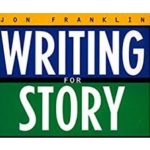You have to take the reader on a journey. There must be ups and downs and you must reach a high point. Some thoughts on narrative arcs and structuring you story . . .
We human beings are biologically wired to learn, communicate, and understand through stories.
“Evolution shaped our brain to learn through story,” says Dr Marco Lacaboni, professor of biobehavioral sciences at the University of California, Los Angeles.
Neuroscience research shows that storytelling activates specific brain areas, especially comprehension centres.
We communicate better, we get our message across more powerfully, when we tell a story rather than present a collection of facts.
Deeper truth
The narrative, the story-telling, allows the writer to reveal some deeper truth. And it’s the strength of the narrative which will determine whether your message stays with the reader long after he has finished with your article or blog post.
But how do you do this?
First you need a plan. You need to find a way of bringing some structure to your facts.
But don’t make the mistake of transcribing your entire notebook or audio recording before you begin shaping your story.
If you do that the writing process will take longer and the story might end up as a chronological account. In other words it will unfold in the (often tedious) order that you made your notes or recording.
And while all stories have a beginning, a middle and an end, these needn’t be in the precise order in which they happened.
When in doubt
When in doubt, start off by asking yourself what struck you most about an interview you had with your subject. What did you, personally, find to be the most interesting incident or remark at an event.
Imagine you were to go home and tell your mom or a close friend about what you saw or what happened on a story assignment, what would be the first thing you would mention?
Chances are that thing should be at the heart of the story; perhaps it provides your central theme.
Then go ahead and plan your story structure around that thing.
Feeling tense
Ideally, your story needs to have some kind of dramatic tension.
By this we mean something’s not right, or someone faces a crisis or difficulty of some sort and, ideally, sets out to overcomes it.
When this happens the tension is resolved and readers feel satisfaction, which produces greater understanding, appreciation, and excitement.
Once you understand where the tension is coming from you can work out how things should unfold in your story, you can plot some kind of a narrative arc.

This would typically be along these lines: setup, rising tension, climax, falling tension and resolution.
Not all stories have these elements and some very good stories have been written that turn these conventions on their head or follow different patterns entirely.
But the story arc remains a useful device. It provides a spine on which to build your story.
And remember, when writing a feature story to write about people, not issues. Use the people to illuminate the issues.
A note on newsworthiness
Narrative wiring is great. We all love a good story. But better still if relates to something that is newsworthy.
What do we mean by newsworthy?
Alan Dunn, a veteran South African newspaperman, always asked staff when they presented story ideas or pitches: Is this new, fresh, or interesting?
Stories need to tick at least one of these three boxes if they are going to grab the reader’s attention.
A story is newsworthy if it is has:
Timeliness – Has it just happend? Is about to happen or is still happening? We are not in the business of writing history.
Proximity — Something that is happening close to your readers geographically.
Impact or consequence – Is it about something that affects people in a significant way.
Novelty/ Rarity – No point in writing about the commonplace (unless you have a novel way of doing it!)
Conflict – This brings dramatic tension to a story.
Prominence – Stories about important people are generally more newsworthy than stories about nobodies.
This, though, does not mean that a so-called ‘nobody’ does not have good story to tell, or what happens to a so-called ‘nobody’ cannot have resonance. It’s all about the way the story is told! – Roving Reporters
Further reading:
What is the Narrative Arc? A Guide to Storytelling Through Story Structure













